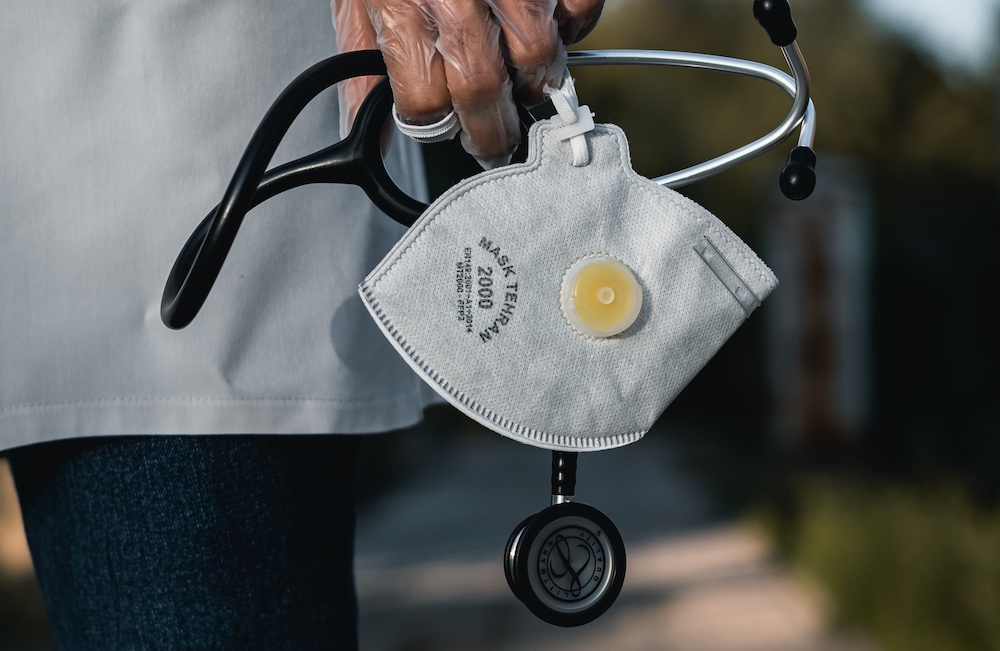Call for Participation: Healthcare Simulation Industry COVID-19 Impacts Survey
The coronavirus pandemic has impacted so many elements of medicine, including healthcare simulation education and training. Over the past two years, simulationists from around the world have voiced ways in which COVID-19 has shifted their protocols and procedures. To compile this information and share industry-wide insights, HealthySimulation.com has developed a 5-minute industry survey. Through participation in this study, clinical simulation educators, technologists, learners, and more can help the healthcare simulation community better understand the impacts of COVID-19 on the industry. Questions range from how many years a simulationists has worked in the field, to their program disciplines, and whether or not their sim lab closed during the onset of the pandemic. We ask readers to participate and share the survey to help us all reflect on the future of medical simulation. Take the quick survey by clicking here or completing it below:
During numerous HealthySimulation.com CE Webinar presentations over the past 18 months, such as those given by Dr. Laura Gonzalez, PhD, APRN, CNE, CHSE-A, ANEF, FAAN Vice President, Clinical Learning Resources of Sentinel U, or Dr. Kellie Bryant, DNP, WHNP, CHSE, Executive Director of Simulation and Assistant Professor at Columbia University School Of Nursing, that the technologies invested to overcome COVID were in many cases more affordable, more efficient, and more effective.
Sponsored Content:
Further, Yoon Soo Park, PhD, Associate Professor, Harvard Medical School Director of Health Professions Education Research Massachusetts General Hospital recently shared at the Healthcare Distance Simulation Collaboration event in June 2021, 82% of 618 clinical simulation programs will be continuing distance simulation/hybrid simulation beyond the end of COVID-19.
Also, according to the article, “COVID-19 pandemic preparation: using simulation for systems-based learning to prepare the largest healthcare workforce and system in Canada,” healthcare resources have been strained to previously unforeseeable limits as a result of the COVID-19 pandemic of 2020. Further, the article shares that clinical simulation has been proven to be pivotal for both healthcare provider learning and systems integration in the context of testing and integrating new processes, workflows, and rapid changes to practice (e.g., new cognitive aids, checklists, protocols) and changes to the delivery of clinical care.
Overall, the goal of the paper is to share the unique features and advantages of using a centralized provincial simulation response team, preparedness using learning and systems integration methods, and to share the highest risk and highest frequency outcomes from analyzing a mass volume of COVID-19 simulation data across the largest health authority in Canada. Noteworthy excerpts from the article include:
“The importance of using simulation as a “first choice” strategy for ensuring individual, team, and system readiness in times of crisis is supported by multiple publications in the literature [5, 51,52,53], and highlights that a sustained investment in simulation programs will have immeasurable impacts across healthcare systems following the pandemic. Many of these papers indicate a single site or unit approach to pandemic preparation, although do not specifically highlight using a coordinated and centralized simulation team, development of robust valid curriculum, and real-time data analysis of emerging themes from hundreds of simulations.”
Sponsored Content:
“One of the emerging findings that differed our project from other COVID-19 system simulations experiences both nationally and globally in using simulation as both a learning and evaluation tool to prepare was recognizing the critical importance of embedding simulation as a central part of the organizational learning, and the overall pandemic preparedness strategy. Similar to an operational “Emergency Command Center,” simulation programs (regardless of the size) need to situate themselves to be members “at the table” with key programs informing decision-making, and influencing organizational planning and pandemic preparedness from the beginning.”
“Recognizing that not all health authorities have the opportunity to coordinate or operationally support a centralized team and curriculum across sites; we recommend the explicit effort of simulation programs to align with other programs in meaningful ways to analyze and share emerging data in real-time to support validation for broader sharing and scalability when possible.”
“Our pandemic preparedness highlighted the essential use of simulation as both an evaluation tool capable of testing systems and processes, and identifying and mitigating LSTs, as well as an education tool capable of rapidly preparing frontline teams in terms of the changes identified above. This project has identified how the dissemination and broadcasting of curriculum and lessons learned (e.g., emerging themes, innovations, systems-based approaches) from simulation can rapidly help a large organization over a large geographic area be adequately prepared for an evolving situation like the COVID-19 pandemic of 2020.”
Take the Survey to Share Your Experiences!
Lance Baily, BA, EMT-B, is the Founder / CEO of HealthySimulation.com, which he started in 2010 while serving as the Director of the Nevada System of Higher Education’s Clinical Simulation Center of Las Vegas. Lance also founded SimGHOSTS.org, the world’s only non-profit organization dedicated to supporting professionals operating healthcare simulation technologies. His co-edited Book: “Comprehensive Healthcare Simulation: Operations, Technology, and Innovative Practice” is cited as a key source for professional certification in the industry. Lance’s background also includes serving as a Simulation Technology Specialist for the LA Community College District, EMS fire fighting, Hollywood movie production, rescue diving, and global travel. He and his wife live with their two brilliant daughters and one crazy dachshund in Las Vegas, Nevada.
Sponsored Content:


















